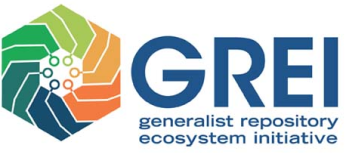Search the repository
Recently published
130309 results
- Source data Figure 5 Yuan et al_iScience_2025Full images of western blots used in Figure 5J-K from Yuan et al. Modulation of striatal cAMP levels: a key pathway in the treatment of hyperkinetic movement disorders ISCIENCE-D-25-11384R1
- Research on static and dynamic stiffness and damping characteristics of ship limiterResearch on static and dynamic stiffness and damping characteristics of ship limiter
- datasetReproductive traits uploaded in this repository were row data
- MATLAB Code for Exact Solution of 3D Poiseuille Flow of a Micropolar Fluid in a Rectangular Channel via Double Fourier SeriesThis dataset contains MATLAB source code that implements the exact analytical solution for the steady three-dimensional Poiseuille flow of a micropolar fluid in a rectangular channel. The code computes the velocity and microrotation fields based on the double Fourier series and generates six key figures visualizing the flow structure and the influence of micropolarity.
- Research data for article "Knowledge Maturity and Corporate Green Technological Innovation: A Knowledge Integration Perspective" Green technological innovation is a key driver of sustainable development. As a fundamental attribute of knowledge, its maturity can shape the direction and efficacy of innovation. This study, grounded in knowledge integration theory, proposes an inverted U-shaped relationship between knowledge maturity and corporate green technological innovation. Analyzing a panel of Chinese A-share non-financial firms, we find robust evidence supporting this curvilinear effect. We further demonstrate that regulatory institutional pressure steepens this inverted U-shaped curve, whereas normative and imitative institutional pressures exhibit no significant moderating effect. Moreover, this relationship is more pronounced in non-heavy-polluting, non-state-owned, and technology-intensive enterprises. Our findings contribute to the knowledge management and green innovation literature by revealing the nuanced role of a key knowledge attribute and its boundary conditions, offering managers insights to leverage knowledge reserves for targeted green strategies under external pressures.
- Source Code for: The master virulence regulator PhoP dictates carbon metabolism by controlling cyclic AMP synthesis in SalmonellaSource code for "The master virulence regulator PhoP dictates carbon metabolism by controlling cyclic AMP synthesis in Salmonella" authored by Nick D. Pokorzynski, Elisabeth C. Sams-Dodd, Chris Esneault, Katarina A. Jones, Shawn R. Campagna, and Eduardo A. Groisman
- Yellow Perch seining in Spirit Lake, IowaThese are data on Yellow Perch seining in Spirit Lake, Iowa collected over 36 years (1989-2024). Fish were collected in August using a lampara-style beach seine in shallow water at eight fixed sites.
- Dama Gazelles Texas GPS Collar Data Mungall and CooperDama Gazelles are critically endangered within their native African range, however animals kept on large ranches in Texas provide a unique opportunity to study social behavior and habitat requirements of Dama Gazelles in near free range conditions. This data set consists of data from Lotek GPS collars deployed on animals on 2 Texas ranches for one year each. This data is the basis of several publications by Mungall and Cooper describing the movements, social behavior and spatial dynamics of Dama Gazelles. The information is required for species management and reintroduction of the Dama Gazelles to their native countries.
- Sensorimotor strategies for rapid leadership takeover in flying echolocating batsThis dataset contains the underlying data and analysis code for the manuscript 'Sensorimotor strategies for rapid leadership takeover in flying echolocating bats'. It includes three primary MATLAB tables: 1) Echolocation_AnalysisTable.mat: contains different encounter types (Alone, Leads, Follows) and corresponding echolocation parameters- CallPeakPower, Duration, IPI, and CallMaxFreq. 2) Switch_AnalysisTable.mat: contains flight kinematic parameters ( Turn Phase Speed, Pre-Turn Speed, Turn Phase Angular Velocity, Pre-Turn Angular Velocity for every flight type (Switch vs No-Switch) and position (leading vs following). 3) RelativeTurningStartTime_AnalysisTable.mat: contains relative turning start time data for every flight type (Switch vs No-Switch). The four MATLAB scripts (SwitchAnalysis_GLMMcode.m, RelativeTurningStartTime_GLMM code, CallPeakPower_GLMMcode.m, and CallMaxFreq_GLMMcode.m) can be used to reproduce the main figures and statistical analyses reported in the paper.
- Source Data for: The master virulence regulator PhoP dictates carbon metabolism by controlling cyclic AMP synthesis in SalmonellaSource Data for "The master virulence regulator PhoP dictates carbon metabolism by controlling cyclic AMP synthesis in Salmonella" authored by Nick D. Pokorzynski, Elisabeth C. Sams-Dodd, Chris Esneault, Katarina A. Jones, Shawn R. Campagna, and Eduardo A. Groisman
1

The Generalist Repository Ecosystem Initiative
Elsevier's Mendeley Data repository is a participating member of the National Institutes of Health (NIH) Office of Data Science Strategy (ODSS) GREI project. The GREI includes seven established generalist repositories funded by the NIH to work together to establish consistent metadata, develop use cases for data sharing, train and educate researchers on FAIR data and the importance of data sharing, and more.
Find out moreWhy use Mendeley Data?
Make your research data citable
Unique DOIs and easy-to-use citation tools make it easy to refer to your research data.
Share data privately or publicly
Securely share your data with colleagues and co-authors before publication.
Ensure long-term data storage
Your data is archived for as long as you need it by Data Archiving & Networked Services.
Keep access to all versions
Mendeley Data supports versioning, making longitudinal studies easier.
The Mendeley Data communal data repository is powered by Digital Commons Data.
Digital Commons Data provides everything that your institution will need to launch and maintain a successful Research Data Management program at scale.
Find out more